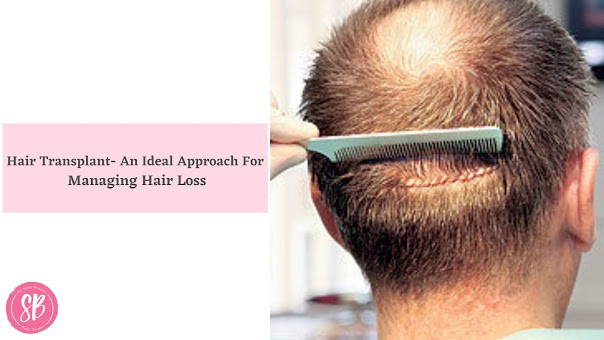Hair Transplant- An Ideal Approach For Managing Hair Loss
Hair restoration with hair transplant is a process that helps to replace lost hair with natural hair in balding areas. The effects of this treatment for hair loss are long term. In this kind of surgery where the hair that is already existent is moved to cover the bald or scant areas.
In this blog, the best hair fall treatment doctor in Gurgaon, at SB Aesthetics, has discussed hair transplant procedures in detail. If one is interested in these procedures, the doctor, based on an individual requirement, decides between Follicular unit transplantation (FUT) and Follicular unit extraction (FUE).
Read on to know more:
The Two Major Types of Hair Transplant Techniques Are:
Follicular Unit Transplantation (FUT): In this procedure the doctor will trim a strip of skin from the donor area before using sutures to close the wound. The donor skin will then be separated into microscopic follicular units, each containing one or more hair follicles, and inserted into the required area.
Follicular Unit Extraction (FUE): To remove follicles from the donor site, the doctor will use a small punch tool. There will still be some scarring after this operation, although it may be less obvious, and stitches are typically not necessary.
Procedure of Hair Transplant
Pre-procedure: Prior to the hair transplant process, photos will be taken to show the extent of hair loss, to identify the thinning hair spots that need to be treated, and to prepare the donor area and remove the donor hair. The hair at the donor area is trimmed while the surrounding hair is preserved at all times. Once the local anesthetic takes effect, the donor tissue area on the side and back of the skull will be cut out. Permanent hair restoration is achieved by these permanent hair follicles.
Preparation of the Follicular Units: Following the removal of the donor tissue, preparation of the follicular units for insertion in order to move on to the next step of the hair transplant surgery. The donor strips are separated into their units, or groups of follicles. There will be one, two, three, or four hair follicles per unit.
Creation of recipient sites: A second application of local anesthetic will be applied to the recipient locations once the follicles are divided and prepared for transplantation. Following that, each of the tiny incisions on the scalp where the follicular units will be inserted and marked. The placement, angle, and depth of each unit must be carefully considered
Follicular unit placement: The individual follicular units will be inserted in the recipient sites of the donors. To optimize the density and coverage of the balding areas, one- and two-hair follicular units are placed in the front (near the hairline) and three- and four-hair follicular units behind the reconstructed hairline. This method maximizes the coverage and density while delivering a light, natural, visually acceptable hairline.
Post Procedure
The newly implanted grafts will be examined to make sure they were placed. Written and verbal postoperative instructions include directions on how to take care of the transplant areas, prescribed medication to help in sleeping and ease any discomfort, and optional medication to take in the days after the hair transplant process. For the first few nights following the surgery. Patients are advised to come back the day after their hair transplant surgery to have their hair washed and have the recipient sites and donor area examined.
Recovery
It is typical and anticipated during this time to experience some discomfort, tightness, and even some numbness. The majority of patients discover that they can go back to work the next day, while some may decide to take it easy at home for an extra day or two.
Scabbing and mild redness could appear in the recipient sites over the coming days. The brow may also swell, but this is uncommon in most cases. Any swelling and redness should go away a week following the hair restoration operation.
Result
The hair in the areas that have been repaired, grows with the same colour and texture as the original hair permanently. This treatment, when carried out by a qualified surgeon, is often beneficial, boosts self-confidence and long-lasting.
Hair transplant surgery may be a viable choice for those who have hair thinning and hair loss. It is a permanent solution however, hair loss may still be noticed due to various reasons. To achieve long lasting effects of the procedure, regular checkups are necessary. It is always advisable to get consulted by an expert hair transplant doctor. One who is skeptical about hair transplant or has been thinking of getting it for a long time should visit SB Aesthetics to know more about this procedure with Dr. Shilpi Bhadani, hair transplant surgeon in Gurgaon.




Comments
Post a Comment